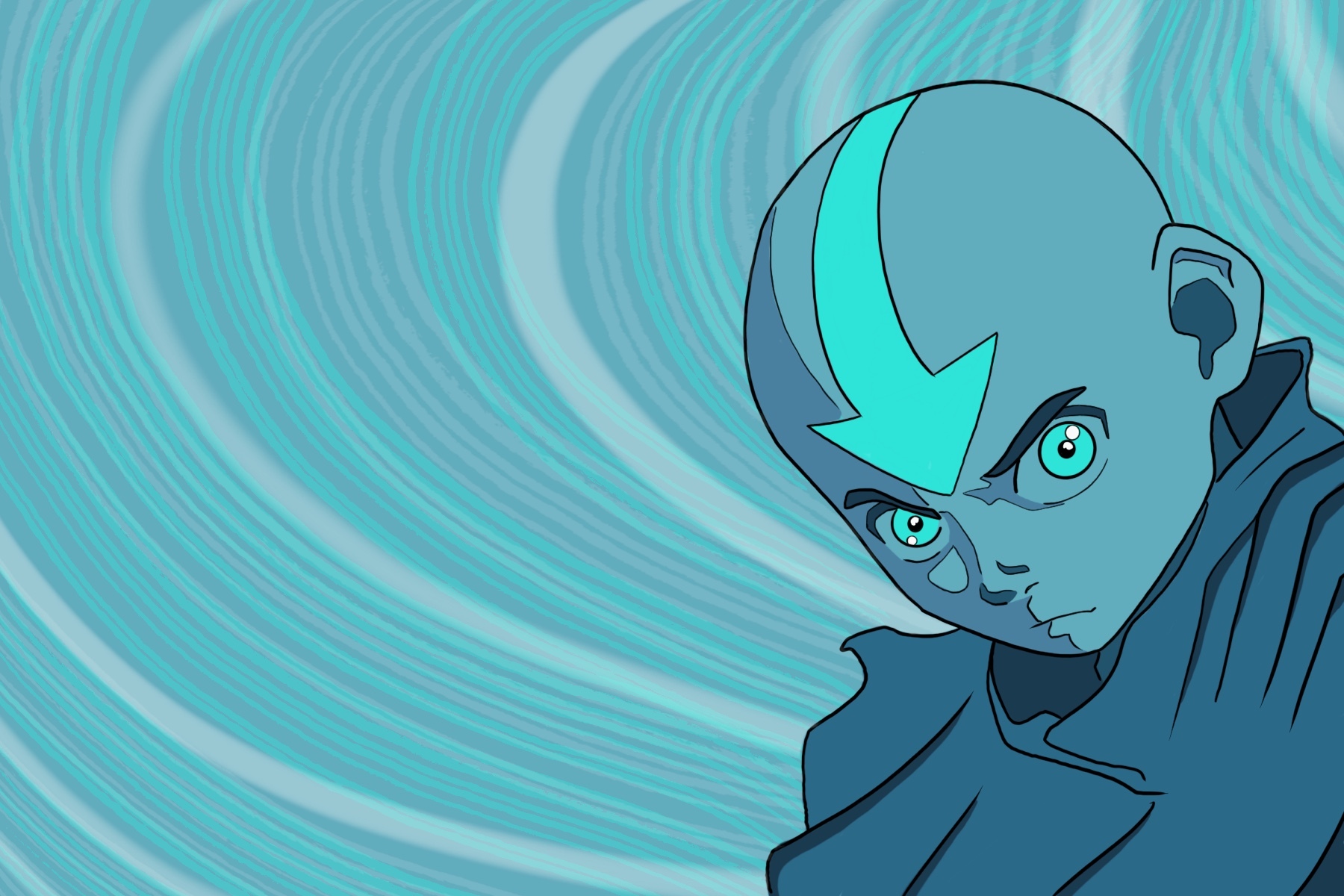May 15, 2020, is a day that will go down in history for American “Avatar: The Last Airbender” fans. It was the day they no longer had to drop cash for a Blu-ray, sneak around some illegal streaming site with inappropriate ads around every corner, or search for a slightly more legal, slightly less ad-filled site. It was the day “Avatar: The Last Airbender” became available on Netflix in the U.S.
“Avatar,” airing on Nickelodeon from 2005 to 2008, tells the story of four nations — the Fire Nation, the Earth Kingdom, the Water Tribe and the Air Nomads — that are thrust into chaos due to the Fire Nation inciting a war of conquest. In each nation, there are “benders,” people that can manipulate one of the four elements. Aang, the Avatar, is the only one who can control all of them. He, along with a flying bison, winged lemur and a team of friends (also known as “Team Avatar” or affectionately nicknamed “The Gaang” by fans) set off on a mission to defeat the Fire Lord and restore peace and balance to the world.
Although airing over a decade ago, the hype and love for the show is anything but dead. Once Netflix announced it would be streaming “Avatar,” the renewed excitement and childhood nostalgia was electric. Talk about the show trended on Twitter, with memes as far the eye could see. So, what’s the big deal? What makes “Avatar: The Last Airbender” so great?
Immaculate World Building of “Avatar”
The world of “Avatar” is so intricately detailed that it’s not very hard to immerse yourself in it. Each episode is extremely vital to its world building; not one second of airtime is wasted. New information is carefully given, and when the audience receives it, they’re immediately aware that it’s not something to be forgotten. It will undoubtedly be used later on to develop the plot and its characters.
The thing with “Avatar” is that it doesn’t use flashy, fancy explanations to get its audience to understand its universe. Although bending is obviously a fantastical element, the show uses some pretty simple, well-known concepts: nations divided by war, tyrannical rulers, greed leading to widespread suffering — things we’re unfortunately very familiar with in reality. The simplicity is what makes the show’s world so believable.
Powerful Themes
Just because “Avatar” was marketed as a children’s show does not mean that it ever talked down to its audience. It wasted no time touching on dark subject matter such as discrimination, oppression, imperialism and genocide. Right in the beginning of the show, the audience learns that the Fire Nation wiped out the Air Nomads, and we get to witness Aang mourn the loss of his culture, people and beloved guardian and mentor, Monk Gyatso. It’s absolutely heart wrenching, and a tough scene to digest no matter your age.
War is a constant backdrop, and the series does an amazing job at showing how war makes victims of everyone. You can see it in the Fire Nation school children who are taught that their nation’s imperialism is good, or the systematic inequality of citizens in Ba Sing Se. “Avatar: The Last Airbender” makes it extremely clear how corruption and choosing power over peace only causes pain, and does so in a way that is tasteful and easy to comprehend.
“If you dumb things down and oversimplify them, it might work for six- or seven-year-olds but even ten- or 11-year-olds reject things that don’t look like the world around them,” explained Aaron Ehasz, head writer of “Avatar: The Last Airbender.” “Can you craft storytelling with incredible empathy that respects the intelligence of the audience? Through doing this, you build a story with incredible impact to a young person that also sticks with them as they grow older. Because what we wrote is still true. We didn’t turn it into a lie to make it more palatable.”
Episodes Loaded With Meaning
While each episode of “Avatar” was a treat, there were some that were just so well executed, they’ve stuck with their audience throughout the years. One great example of this is “The Southern Raiders,” in which Zuko and Katara go on a journey to locate the man who killed her mother. When they do find him, Katara is unable to bring herself to kill him, sending a powerful message about breaking the cycle of violence and intergenerational trauma. Another is “The Tales of Ba Sing Se,” which features vignettes about the adventures of each main character in the city, allowing the audience to laugh and cry with them, and get a deeper glimpse into who they truly are. These episodes are perfect displays of the show’s versatility when it comes to storytelling and tone shifting.
Zuko. That’s it. Just Zuko.
The cast of “Avatar” is diverse and lovable. Every character is fleshed out and nuanced and feels so real, like someone you could come across in everyday life. Even the villains are interesting. But there’s something about Team Avatar heartthrob Zuko that just demands your attention.
When the audience is first introduced to him, it’s easy to write him off as a pesky villain because, essentially, that’s what he is at the time. He’s the exiled prince of the Fire Nation, on a mission to hunt the Avatar down and bring him back to his father, Fire Lord Ozai, to restore his honor. He’s bratty, violent and annoyingly persistent, with his uncle Iroh acting more as his comic relief babysitter than uncle.
After many trials and tribulations, Zuko is forced to look inside himself. Can he unlearn his toxic beliefs about honor, the greatness of the Fire Nation and the Avatar? Can he change his destiny? “I’m begging you, Prince Zuko!” Iroh cries out in “Lake Laogai,” an episode set near the end of the second season. It’s the only time he reprimands the prince in the entire series. “It’s time for you to look inward and begin asking yourself the big questions. Who are you? And what do you want?” It’s those questions that eventually lead to one of the greatest redemption arcs of all time.
Zuko, at his core, is a teenager riddled with fear, and with good reason: It’s what drives him. He’s afraid that he’ll never find the Avatar; he’s afraid that he’ll never be good enough in his father’s eyes; he’s afraid that he’ll never be strong enough. It’s only when he renounces his loyalty to the Fire Nation and eventually joins Team Avatar that we get to see him acknowledge and face his fears. He truly finds strength as he learns to move past his self-doubt and carve his own path. Zuko failed (a lot) and messed up big time in the past, but it took those mistakes to turn him into the wise, kind man he comes to be. It’s pretty impossible not to fall in love with the guy.
Everything Changed When the Fire Nation Attacked (Again)
“Avatar: The Last Airbender” gave us life lessons, fleshed-out characters, gorgeous animation and a timeless storyline. Now that it’s available to stream on Netflix, it’s no surprise that the series is recapturing the hearts of its audience, reeling in new viewers and occupying every binge-watcher’s free time. It’s a fantastic, well-written show that goes above and beyond what we define as “children’s television.” “Avatar” is surely a series that will continue to touch everyone that has the pleasure of coming across it.


















It is not my first time to pay a quick visit this website, i am browsing this web page dailly and take pleasant facts from here everyday.